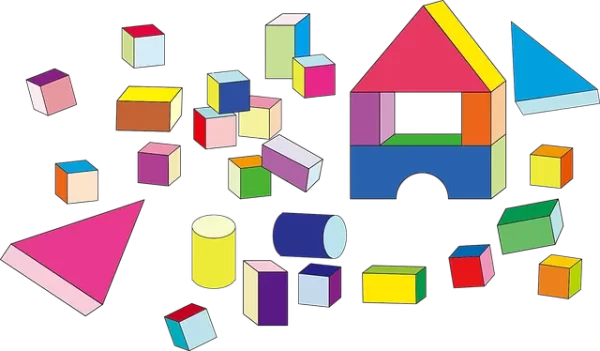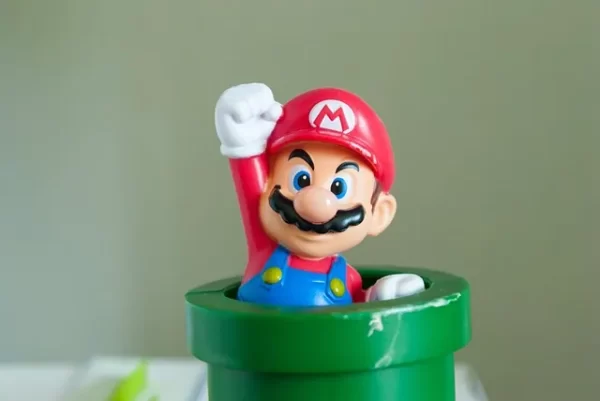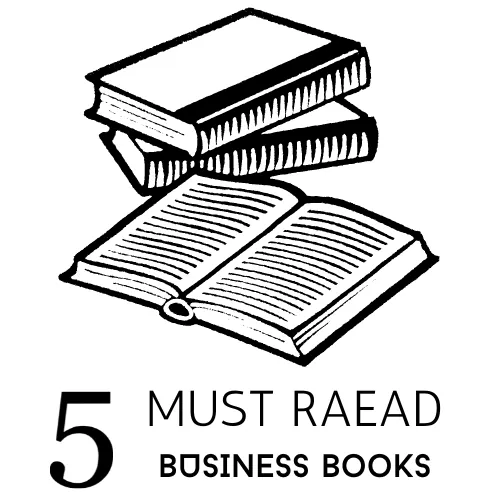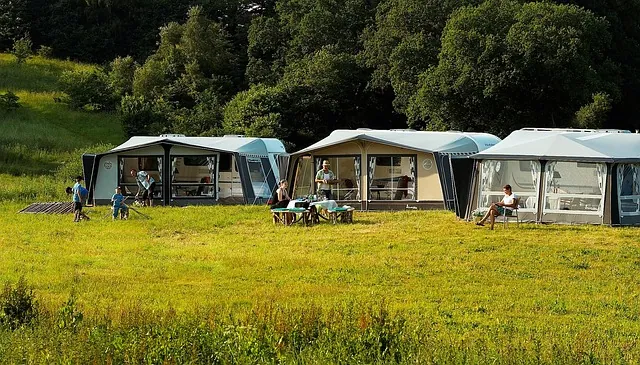Toy market size in India and whether starting a small-scale toy making business is a good idea.
According to a report by IMARC Group, the Indian toy market reached a value of INR 200 Billion (approximately USD 2.7 billion) in 2020. The market is expected to grow at a compound annual growth rate (CAGR) of around 12% from 2021-2026.
Starting a small-scale toy making business in India can be a good idea, but it is important to conduct thorough market research and develop a solid business plan. You will need to consider factors such as the target market, competition, production costs, and distribution channels, among others.
There are several advantages to starting a small-scale toy making business in India, including access to a large and growing domestic market, low labor costs, and government support for small businesses. However, there are also challenges to consider, such as quality control, supply chain management, and regulatory compliance.
Ultimately, the success of a toy making business in India will depend on factors such as the quality and uniqueness of the products, the effectiveness of marketing and distribution efforts, and the ability to adapt to changing market conditions. It is important to carefully evaluate the risks and potential rewards before investing time and resources in a new business venture.

States that are generally considered to be conducive to the industry due to factors such as the availability of raw materials, skilled labor, and strong supply chains.
India is a large country with a diverse range of states and regions, each with its own advantages and challenges for starting a toy making business. However, here are some states that are generally considered to be conducive to the industry due to factors such as the availability of raw materials, skilled labor, and strong supply chains:
- Maharashtra: This state has a well-developed manufacturing infrastructure and is home to several major ports, making it an ideal location for businesses involved in import and export. Mumbai, the capital city, also has a large consumer market.
- Gujarat: Gujarat has a strong industrial base and is known for its skilled workforce and robust supply chains. The state government offers several incentives and subsidies to encourage manufacturing businesses.
- Tamil Nadu: Tamil Nadu has a large and skilled labor force, as well as well-established supply chains for various industries. The state government has also implemented several policies to support small and medium enterprises, including toy manufacturing.
- Uttar Pradesh: Uttar Pradesh has a large and growing consumer market, as well as abundant natural resources and a strong agricultural sector, which can provide raw materials for manufacturing. The state government also offers several incentives and subsidies for businesses.
- Karnataka: Karnataka has a well-developed manufacturing sector and is home to several large industrial hubs, including Bangalore. The state government has implemented several policies to encourage innovation and entrepreneurship in the manufacturing sector.
It is important to note that each state has its own unique advantages and challenges, and it is important to conduct thorough research and analysis to determine the best location for your specific business needs.

A step-by-step guide that can help you start a toy making business in India
- Conduct market research: The first step is to conduct thorough market research to identify the demand for the type of toys you plan to manufacture, as well as to analyze the competition, pricing, and potential customer base.
- Develop a business plan: Based on the market research, develop a detailed business plan that outlines your goals, target market, production processes, marketing strategy, financial projections, and other important aspects of your business.
- Register your business: Register your business as a legal entity and obtain any necessary licenses and permits. This may include registering for GST, obtaining a factory license, and complying with environmental and safety regulations.
- Secure funding: Determine the capital requirements for your business and secure funding from investors, banks, or other sources of financing.
- Set up your manufacturing facility: Acquire a suitable location and set up your manufacturing facility, including equipment, raw materials, and production processes.
- Hire staff: Hire skilled staff, including production workers, quality control personnel, and administrative staff, as needed.
- Develop and produce your products: Based on your business plan and market research, develop and produce high-quality and unique toy products that cater to your target audience.
- Create a distribution network: Develop a distribution network that includes wholesalers, retailers, and online marketplaces. Establish supply chain partnerships for the procurement of raw materials and transportation of finished products.
- Market and promote your products: Develop a strong marketing and promotional strategy that includes advertising, promotions, and online and social media marketing. Participate in trade shows and industry events to gain exposure and build relationships with potential customers and partners.
- Monitor performance and adapt to changes: Monitor the performance of your business and products, and adapt to changes in the market and customer demands. Continuously innovate and improve your products and processes to stay ahead of the competition.
Starting a toy making business in India can be a complex process, but with careful planning, market research, and effective execution, it is possible to build a successful and profitable business. It is recommended to seek advice from a business consultant, accountant, or legal expert to ensure compliance with local laws and regulations, and to maximize your chances of success.
The machinery required for starting a toy Making business
The machinery required for starting a toy making business can vary depending on the type of toys you plan to manufacture. Here are some common types of machinery and equipment that are used in the toy manufacturing industry:
- Plastic molding machines: If you plan to manufacture plastic toys, you will need plastic molding machines, which are used to form and shape molten plastic into different parts and components.
- Injection molding machines: Injection molding machines are used to produce plastic parts and components by injecting melted plastic into a mold.
- Blow molding machines: Blow molding machines are used to produce hollow plastic parts and components by inflating heated plastic into a mold.
- Extrusion machines: Extrusion machines are used to produce plastic parts and components by forcing molten plastic through a die to create a specific shape.
- Cutting and shaping machines: Cutting and shaping machines are used to cut and shape plastic or other materials into specific shapes and sizes, such as cutting fabric or trimming plastic parts.
- Assembly equipment: Assembly equipment such as robotic arms, conveyors, and other machinery are used to assemble the various parts and components into the final toy products.
- Quality control equipment: Quality control equipment such as testing machines, measuring tools, and inspection equipment are used to ensure that the final products meet the required quality standards.
It is important to note that the machinery required will depend on the type of toys you plan to manufacture and the production processes involved. It is recommended to consult with industry experts or seek advice from a machinery supplier to determine the specific machinery and equipment required for your toy making business.
The cost of machinery and equipment for a toy making business
The cost of machinery and equipment for a toy making business can vary widely depending on the type and quality of machinery, the scale of the business, and other factors. Here are some estimated costs for different types of machinery commonly used in the toy manufacturing industry:
- Plastic molding machines: The cost of plastic molding machines can range from around INR 2 lakhs to several crores, depending on the size, capacity, and features of the machines.
- Injection molding machines: Injection molding machines can cost anywhere from INR 6 lakhs to several crores, depending on the size and capacity of the machines.
- Blow molding machines: The cost of blow molding machines can range from around INR 10 lakhs to several crores, depending on the size and capacity of the machines.
- Extrusion machines: Extrusion machines can cost anywhere from INR 5 lakhs to several crores, depending on the size, capacity, and features of the machines.
- Cutting and shaping machines: The cost of cutting and shaping machines can vary widely depending on the type and complexity of the machinery, and can range from INR 50,000 to several lakhs.
- Assembly equipment: Assembly equipment such as robotic arms, conveyors, and other machinery can cost anywhere from a few lakhs to several crores, depending on the complexity and scale of the production line.
- Quality control equipment: Quality control equipment such as testing machines, measuring tools, and inspection equipment can range from a few thousand to several lakhs, depending on the type and quality of the equipment.
It is important to note that the above cost estimates are only a general guide, and the actual cost will depend on various factors such as the quality, capacity, and features of the machinery, as well as the location and supplier of the equipment. It is recommended to conduct thorough research and obtain quotes from multiple suppliers to determine the specific cost of machinery and equipment for your toy making business.

Toys that are in demand
There are many types of toys that are in demand and can be produced by a toy making business. Here are some examples of popular toy categories and specific toys that are currently in demand:
- Educational toys: These are toys that are designed to teach children a skill or concept, such as puzzles, building blocks, and STEM toys.
- Plush toys: These are soft, stuffed animals and characters that are popular with children of all ages, such as teddy bears, dolls, and other stuffed animals.
- Board games: Board games are a classic type of toy that have remained popular over the years. Some popular board games include Monopoly, Chess, and Scrabble.
- Outdoor toys: Outdoor toys such as bicycles, scooters, and skateboards are always in demand, especially during the summer months.
- Electronic toys: Electronic toys such as video games, remote-controlled cars, and robots are popular with children and adults alike.
- Dolls and action figures: Dolls and action figures are a staple of the toy industry, and popular characters from movies and TV shows are often made into toys, such as Barbie dolls and Star Wars action figures.
- Arts and crafts toys: Arts and crafts toys such as coloring books, painting sets, and craft kits are popular with children who enjoy making things with their hands.
These are just a few examples of popular toy categories and specific toys that are in demand. It is important to do thorough market research and identify specific niches and trends within the toy industry to determine which types of toys are in demand in your target market.
Determining the production capacity, cost of production, margin, and pricing
To determine the production capacity, cost of production, margin, and pricing for your toy making business, you will need to consider several factors, including:
- Production capacity: Your production capacity will depend on the size and capacity of your machinery, as well as the number of workers you employ and the hours of operation. You will need to determine the maximum number of toys that you can produce in a given period, such as a day, a week, or a month.
- Cost of production: The cost of production will include the cost of raw materials, labor, machinery, utilities, and other overhead costs. You will need to calculate the cost per unit of each toy that you produce.
- Margin: Your margin is the difference between the cost of production and the selling price of the toy. You will need to determine the desired margin for your business, which will depend on factors such as your production costs, competition, and target market.
- Pricing: The pricing of your toys will depend on your desired margin, as well as the competition, demand, and other market factors. You will need to research the prices of similar toys in the market and determine a pricing strategy that is competitive and profitable for your business.
To calculate the production capacity, cost of production, margin, and pricing, you can follow these steps:
- Determine the cost of raw materials: Research the prices of the raw materials needed to produce the toy, such as plastic, fabric, paint, and other components.
- Calculate the labor cost: Determine the hourly rate of your workers and estimate the number of hours needed to produce each toy.
- Calculate the machinery and utility cost: Determine the cost of running the machinery and the cost of utilities such as electricity, water, and gas.
- Calculate the overhead cost: Determine the cost of rent, insurance, and other overhead expenses.
- Determine the total cost of production: Add up the cost of raw materials, labor, machinery and utility, and overhead cost to determine the total cost of production per unit.
- Determine the margin: Subtract the total cost of production per unit from the desired selling price to determine the margin.
- Determine the selling price: Add the margin to the total cost of production per unit to determine the selling price.
- Determine the production capacity: Calculate the maximum number of toys that you can produce in a given period, such as a day, a week, or a month.
By following these steps, you can determine the production capacity, cost of production, margin, and pricing for your toy making business. It is important to continually monitor and adjust these figures as your business grows and market conditions change.
Factors that are important in the manufacturing business
There are many factors that are important in the manufacturing business, but some of the most crucial ones include:
- Quality control: Maintaining consistent quality is essential for any manufacturing business to succeed. This means having robust quality control processes in place, from raw material selection to the final product inspection.
- Cost control: Managing costs is essential for any business to remain profitable. This means optimizing production processes, negotiating with suppliers to get the best prices on raw materials and other inputs, and minimizing waste.
- Supply chain management: A well-managed supply chain is crucial to ensure timely delivery of raw materials and other inputs, as well as efficient distribution of finished products to customers. This requires close collaboration with suppliers and logistics partners to ensure smooth operations.
- Innovation and flexibility: In today’s rapidly changing business environment, it is important for manufacturers to stay ahead of the curve by investing in new technologies, exploring new product lines, and adapting to changing market conditions.
- Employee training and development: The success of any manufacturing business ultimately depends on its employees. This means investing in training and development programs to help workers acquire the skills and knowledge they need to perform their jobs effectively.
- Customer service: Building strong relationships with customers is essential for any manufacturing business to thrive. This means providing timely and responsive service, addressing customer concerns promptly and professionally, and building trust and rapport with customers over the long term.
These are just a few examples of important factors in the manufacturing business. Ultimately, the key to success in manufacturing is to have a deep understanding of your business and your industry, and to continually look for ways to improve your processes, products, and services.
A simple plan in text for a toy manufacturing business
Executive Summary: [Insert Name of Company] is a start-up toy making business that specializes in producing educational and creative toys for children. We will operate from a production facility located in [Insert City/Town Name] in [Insert State Name] and sell our products through a combination of e-commerce and traditional retail channels. Our goal is to become a leading provider of innovative and high-quality toys in the Indian market, and to eventually expand our operations to other parts of the world.
Business Description: [Insert Name of Company] will manufacture a wide range of educational and creative toys for children, including building blocks, puzzles, art supplies, and other products that promote learning, creativity, and imaginative play. We will use state-of-the-art machinery and equipment to ensure consistent quality and efficient production, and will source our raw materials from reliable suppliers in the region.
Market Analysis: The Indian toy market is a growing industry, with an estimated size of [Insert Estimated Market Size] in [Insert Year]. There is a growing demand for educational and creative toys that promote learning and development, particularly among parents who are looking for ways to supplement their children’s education and keep them engaged in meaningful activities. Our target market will include children aged 2-12, as well as parents, grandparents, and other caregivers who are interested in purchasing high-quality toys for their children.
Marketing and Sales: To reach our target market, we will use a combination of e-commerce and traditional retail channels. We will develop an e-commerce website and social media presence to sell our products directly to consumers, and will also partner with established retail chains to distribute our products through their stores. We will use a mix of advertising, public relations, and influencer marketing to promote our brand and build awareness among our target market.
Management and Organization: [Insert Name of Company] will be owned and managed by [Insert Founder/Owner Names], who bring extensive experience in the toy manufacturing industry. We will hire a team of skilled workers and managers to oversee the production and distribution of our products, and will provide ongoing training and development to ensure their success.
Financial Projections: Our financial projections for the first year of operation are as follows:
- Revenue: [Insert Estimated Revenue]
- Cost of Goods Sold: [Insert Estimated Cost of Goods Sold]
- Gross Profit: [Insert Estimated Gross Profit]
- Operating Expenses: [Insert Estimated Operating Expenses]
- Net Profit: [Insert Estimated Net Profit]
We will seek funding from a combination of equity and debt sources to support our start-up costs and ongoing operations.
Financial Projections and Cost Analysis for a Toy Making Business in India [For your understanding]
Financial projections are a crucial aspect of any business plan, as they help to estimate the financial performance of the business over a specified period of time. Here are some guidelines for quantifying the financial projections in a toy making business plan:
- Revenue: The revenue projection is the estimated total amount of sales that the business will generate over a specified period of time. To estimate revenue, you can use historical sales data from similar businesses, as well as market research and analysis of your target market. For example, you could estimate the number of units of each product you plan to sell, and multiply that by the expected selling price.
- Cost of Goods Sold (COGS): The COGS is the estimated cost of producing each unit of product, and includes the cost of raw materials, labor, and other direct production costs. To estimate COGS, you can research the cost of raw materials and other inputs, and estimate the amount of labor required to produce each unit. You can then multiply these costs by the number of units you expect to produce and sell.
- Gross Profit: The gross profit is the difference between the revenue and the COGS, and represents the amount of money the business will earn before deducting operating expenses. This is an important metric, as it helps to determine the profitability of the business. To calculate the gross profit, simply subtract the COGS from the revenue.
- Operating Expenses: Operating expenses are the costs associated with running the business, such as rent, utilities, salaries, marketing, and other overhead expenses. To estimate operating expenses, you can research industry benchmarks and estimate the costs associated with each category of expense.
- Net Profit: The net profit is the amount of money the business earns after deducting all expenses, including the COGS and operating expenses. This is the ultimate measure of profitability, and reflects the amount of money the business will have left over after all costs are taken into account. To calculate the net profit, simply subtract the operating expenses from the gross profit.
When preparing financial projections for a toy making business, it is important to be as realistic and accurate as possible, and to take into account a wide range of factors that can impact revenue, costs, and profitability. It is also important to update the financial projections regularly based on actual results, and to use them as a tool for monitoring and managing the financial performance of the business over time.
Challenges and threats that can impact success of toy Making business
Like any business, a toy making business faces a number of challenges and threats that can impact its success. Here are some common challenges and threats that you should consider when starting a toy making business:
- Competition: The toy making industry is highly competitive, with many established players and new entrants entering the market. Competing on price can be challenging, as there are often lower-cost alternatives available from overseas suppliers.
- Changing consumer preferences: Consumer preferences and trends can change quickly, and staying up-to-date with the latest trends can be difficult. Failure to adapt to changing preferences and trends can result in declining sales and loss of market share.
- Seasonality: Sales of toys are often seasonal, with higher demand during holidays and special occasions. This can make it challenging to manage inventory and cash flow, as you will need to build up inventory ahead of peak seasons, and manage it effectively to avoid excess inventory after the season has passed.
- Supply chain disruptions: The toy manufacturing industry relies on a complex supply chain that includes raw materials, components, and finished products. Disruptions in any part of the supply chain can lead to delays in production and shipping, which can impact sales and profitability.
- Quality control: Ensuring consistent quality of the products can be a challenge. Failure to maintain quality standards can lead to returns, complaints, and reputational damage.
- Safety regulations: Toy manufacturing businesses need to comply with strict safety regulations to ensure that their products are safe for use by children. Non-compliance with safety regulations can result in fines, lawsuits, and reputational damage.
- Intellectual property infringement: Toy making businesses need to be aware of potential intellectual property infringement and take steps to avoid it. Failure to do so can result in legal action, fines, and reputational damage.
It is important to carefully consider these challenges and threats when developing a business plan for a toy making business, and to develop strategies to address them. With careful planning and execution, it is possible to overcome these challenges and build a successful and sustainable toy manufacturing business.
Licensing and permit requirements for starting a toy Making business in India
To start a toy making business in India, you will need to obtain several licenses and permits. Here are some of the main licenses you may need to obtain:
- Business Registration: First, you will need to register your business with the Ministry of Corporate Affairs (MCA) under the Companies Act, 2013. You can choose to register your business as a private limited company, a partnership firm, or a limited liability partnership (LLP).
- Factory License: To set up a toy manufacturing unit, you will need to obtain a Factory License under the Factories Act, 1948. This license is issued by the Chief Inspector of Factories in the state where the factory is located.
- Goods and Services Tax (GST) Registration: You will also need to register your business for GST, which is a tax on the supply of goods and services. GST registration is mandatory for businesses with an annual turnover of over Rs. 20 lakhs.
- Trade License: A trade license is a permit issued by the local municipal corporation authorizing a business to carry out a particular trade or activity. You will need to obtain a trade license from the local municipal corporation where your factory is located.
- Pollution Control License: As a toy manufacturing business, you will be required to comply with environmental regulations and obtain a Pollution Control License from the State Pollution Control Board.
- Trademark Registration: You may also consider registering your brand name and logo as a trademark to protect your intellectual property and prevent others from using your brand without permission.
The specific licenses and permits required may vary depending on the state where you are located and the size and scale of your business. It is important to research the specific requirements for your state and obtain all necessary licenses and permits before starting your toy making business.




